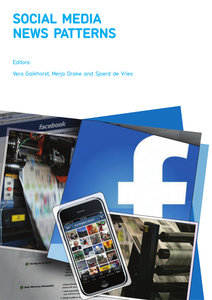Wereldwijd onderzoek: Hoe gebruiken nieuwsmedia social media? Jongeren lezen geen krant meer, ze kijken op hun smartphone die ze altijd bij de hand hebben. Binnen het lectoraat social media en reputatiemanagement van NHL hogeschool te Leeuwarden heeft een groep internationale studenten in 12 landen onderzoek gedaan. Hierbij hebben ze meer dan 150 social media sites bestudeerd van nieuws media. De resultaten maken deel uit van een internationaal onderzoek van NHL Hogeschool en Haaga Helia University. De onderzoeksvraag was: Wat speelt zich af in de nieuwsmedia? Persbureaus kunnen het overzicht gebruiken om hun social media te optimaliseren. En voor ieder die journalistiek een warm hart toedraagt is het interessante informatie over de nieuwsmedia in een overgangssituatie (2nd edition)
DOCUMENT

In this paper we discuss the general approach and choices we made in developing a prototype of a social media monitor. The main goal of the museum monitor is to offer museum professionals and researchers better insight in the effects of their own social media usage and compare this with other actors in the cultural heritage sector. It gives researchers the opportunity to consider communication within the sector as whole. In the research project “Museum Compass” we have developed a prototype of a social media monitor, which contains data of current and historic online activities on Facebook, Twitter, YouTube, Foursquare and Flickr of all registered Dutch museums. We discuss – mostly in a practical sense – our approach for developing the monitor and give a few examples as a result of its usage.
DOCUMENT

This longitudinal, quantitative study contributes to the debate on technology-based professional development by examining the extent to which a learning (LinkedIn) intervention in a university setting affects an individual’s social media use for professional development, and the extent to which this relates to self-reported employability. In addition, we investigated how this relationship is moderated by an individual’s motivation to communicate through social media (LinkedIn). Based on social capital theory and the conservation of resources theory, we developed a set of hypotheses that were tested based on longitudinal data collected from university employees (N = 101) in middle- and high-level jobs. First, in line with our expectations, social media use for professional development was significantly higher after the learning intervention than before. Second, partially in line with our expectations, social media use for professional development was positively related with the employability dimension anticipation and optimization. Third, contrary to our expectations, motivation to communicate through social media (LinkedIn) did not have a moderating role in this relationship. We concluded that the learning intervention has the potential to foster social media use for professional development, and in turn, can contribute to individuals’ human capital in terms of their employability. Hence, the intervention that forms the core of this empirical research can be a sustainable and promising human resource management (HRM) practice that fits the human capital agenda.
DOCUMENT
